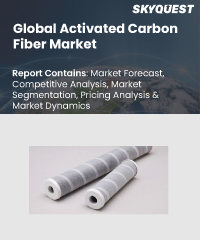
Report ID: SQMIG15E2382

Report ID:
SQMIG15E2382 |
Region:
Global |
Published Date: March, 2024
Pages:
184
|
Tables:
64 |
Figures:
75
Activated Carbon Fiber (ACF) Market Drivers
Increasing Demand for Water Treatment Application
Increasing Public Awareness Regarding Health Risks Associated with Poor IAQ
Restraints
ACF Faces Competition from Well-established and Cost-effective Alternatives
Hike in Prices Due to Raw Material Shortage
Our industry expert will work with you to provide you with customized data in a short amount of time.
REQUEST FREE CUSTOMIZATIONWant to customize this report? This report can be personalized according to your needs. Our analysts and industry experts will work directly with you to understand your requirements and provide you with customized data in a short amount of time. We offer $1000 worth of FREE customization at the time of purchase.

Report ID: SQMIG15E2382